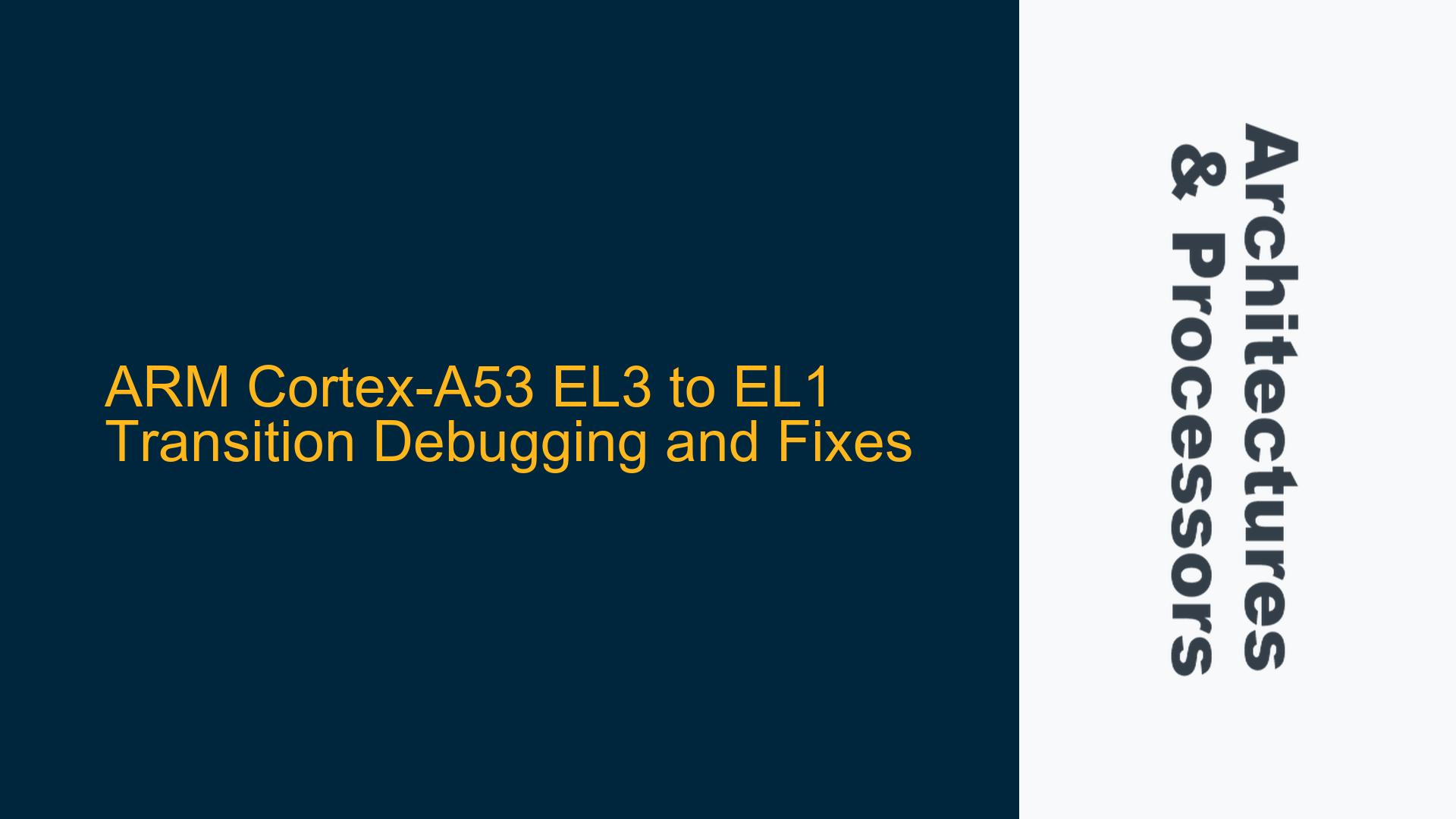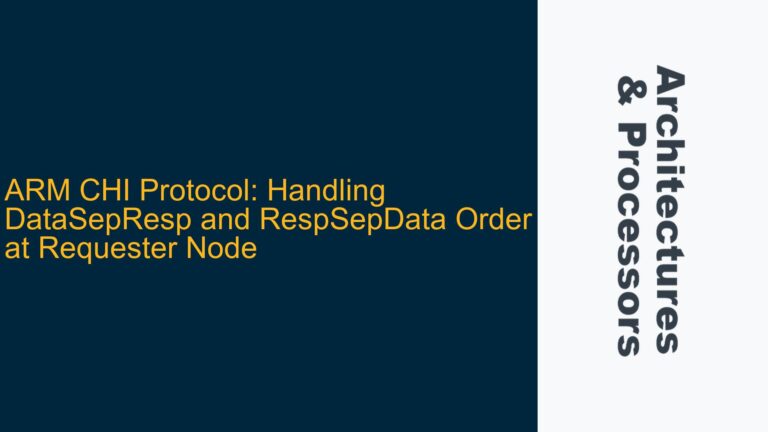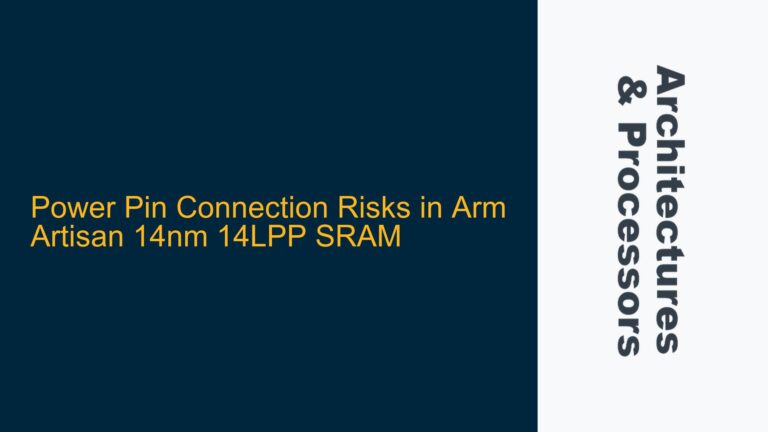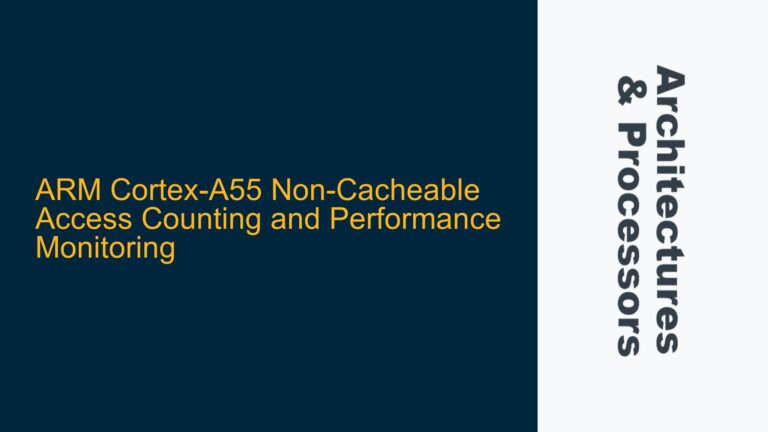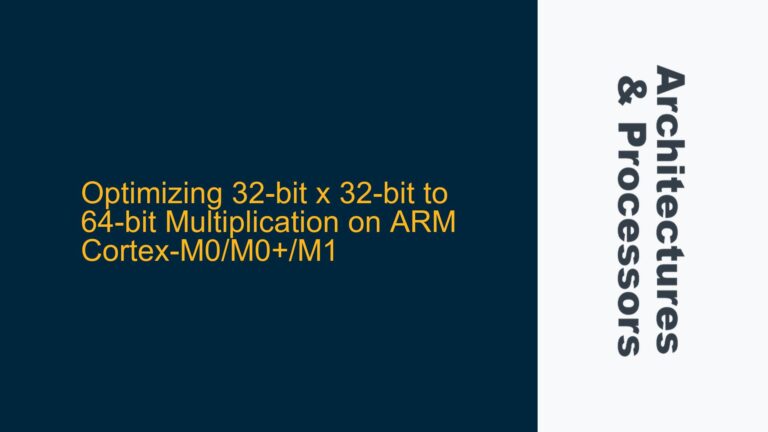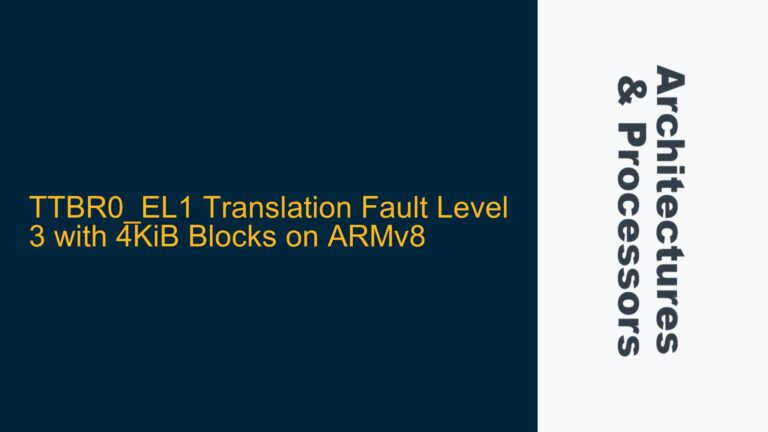ARM Cortex-A53 EL3 to EL1 Transition Failure During ERET Execution
The transition from Exception Level 3 (EL3) to Exception Level 1 (EL1) on the ARM Cortex-A53 processor is a critical operation that involves configuring several system registers and ensuring the correct state of the processor before executing the Exception Return (ERET) instruction. The provided code snippet attempts to perform this transition but encounters issues during the ERET execution, causing the JTAG debugger to lose control. This post delves into the root causes of this failure and provides detailed troubleshooting steps and solutions.
Misconfiguration of System Registers and Missing State Initialization
The primary issue lies in the incomplete or incorrect configuration of system registers and the processor state before executing the ERET instruction. The ARM Cortex-A53 processor requires precise setup of several registers to ensure a smooth transition between exception levels. The key registers involved in this process include the System Control Register for EL1 (SCTLR_EL1), Hypervisor Configuration Register (HCR_EL2), Secure Configuration Register (SCR_EL3), and Saved Program Status Register for EL3 (SPSR_EL3). Additionally, the Exception Link Register for EL3 (ELR_EL3) must be correctly set to the entry point of the EL1 code.
The provided code configures these registers but may not fully account for all necessary state initializations. For instance, the SCTLR_EL1 register is set to disable the MMU and caches, which is a common practice during boot sequences. However, other critical aspects such as the initialization of the Vector Base Address Register for EL1 (VBAR_EL1) and the stack pointer for EL1 (SP_EL1) are not addressed. The absence of these initializations can lead to undefined behavior when the processor attempts to execute the ERET instruction.
Moreover, the SPSR_EL3 register is configured to mask all interrupts and set the processor to EL1h mode, which is correct. However, the interaction between the HCR_EL2 and SCR_EL3 registers, particularly the RW bit, must be carefully considered. The RW bit in both registers determines whether the lower exception levels execute in AArch64 or AArch32 state. In this case, the RW bit is set in both registers, ensuring that EL1 operates in AArch64 state. However, the absence of a valid vector table at EL1 can cause the processor to enter an undefined state upon encountering an exception.
Implementing Vector Tables and Ensuring Valid Exception Handling
To address the issue, it is essential to implement valid vector tables for all exception levels and ensure that the processor can handle exceptions correctly after the transition to EL1. The Vector Base Address Register for EL1 (VBAR_EL1) must be initialized to point to a valid vector table. This vector table should contain entries for all exception types, including synchronous exceptions, IRQs, FIQs, and system errors. Each entry should either handle the exception or branch to an appropriate handler.
The following table outlines the necessary vector table entries for EL1:
| Exception Type | Offset from VBAR_EL1 | Description |
|---|---|---|
| Synchronous | 0x000 | Handles synchronous exceptions such as SVC instructions and data aborts. |
| IRQ | 0x080 | Handles interrupt requests from peripherals. |
| FIQ | 0x100 | Handles fast interrupt requests. |
| SError | 0x180 | Handles system errors such as parity errors and external aborts. |
Each entry in the vector table should be implemented as follows:
.align 11
vbar_el1:
b sync_handler // Synchronous exception handler
.align 7
b irq_handler // IRQ handler
.align 7
b fiq_handler // FIQ handler
.align 7
b serror_handler // SError handler
In addition to the vector table, the stack pointer for EL1 (SP_EL1) must be initialized before executing the ERET instruction. The stack pointer is crucial for handling exceptions and function calls in the EL1 environment. The following code snippet demonstrates the initialization of SP_EL1:
ldr x2, =el1_stack_top // Load the top of the EL1 stack
msr sp_el1, x2 // Set SP_EL1 to the top of the EL1 stack
Detailed Troubleshooting Steps and Solutions for EL3 to EL1 Transition
To ensure a successful transition from EL3 to EL1, follow these detailed troubleshooting steps and implement the necessary fixes:
- Initialize VBAR_EL1 with a Valid Vector Table:
- Create a vector table for EL1 with entries for synchronous exceptions, IRQs, FIQs, and SErrors.
- Ensure each entry branches to an appropriate handler or an infinite loop for debugging purposes.
- Set the VBAR_EL1 register to point to the base address of the vector table.
.align 11
vbar_el1:
b sync_handler // Synchronous exception handler
.align 7
b irq_handler // IRQ handler
.align 7
b fiq_handler // FIQ handler
.align 7
b serror_handler // SError handler
.globl switch_to_EL1
switch_to_EL1:
ldr x1, =vbar_el1 // Load the base address of the vector table
msr vbar_el1, x1 // Set VBAR_EL1 to the base address of the vector table
- Initialize SP_EL1 with a Valid Stack Pointer:
- Allocate a stack for EL1 and set the SP_EL1 register to the top of the stack.
- Ensure the stack is properly aligned and sized for the application.
ldr x2, =el1_stack_top // Load the top of the EL1 stack
msr sp_el1, x2 // Set SP_EL1 to the top of the EL1 stack
- Configure System Registers Correctly:
- Ensure the SCTLR_EL1 register is configured to disable the MMU and caches if necessary.
- Set the HCR_EL2 and SCR_EL3 registers to ensure EL1 operates in AArch64 state.
- Configure the SPSR_EL3 register to mask interrupts and set the processor to EL1h mode.
ldr x1, =SCTLR_VALUE_MMU_DISABLED
msr sctlr_el1, x1
ldr x1, =HCR_VALUE
msr hcr_el2, x1
ldr x1, =SCR_VALUE
msr scr_el3, x1
ldr x1, =SPSR_VALUE
msr spsr_el3, x1
msr elr_el3, x0
- Execute the ERET Instruction:
- Ensure all system registers and the processor state are correctly configured before executing the ERET instruction.
- Verify that the ELR_EL3 register points to the entry point of the EL1 code.
eret
- Debugging and Verification:
- Use the JTAG debugger to step through the code and verify the state of each register before and after the ERET instruction.
- Place infinite loops in the vector table entries to catch any unexpected exceptions and aid in debugging.
sync_handler:
b sync_handler // Infinite loop for debugging synchronous exceptions
irq_handler:
b irq_handler // Infinite loop for debugging IRQs
fiq_handler:
b fiq_handler // Infinite loop for debugging FIQs
serror_handler:
b serror_handler // Infinite loop for debugging SErrors
By following these steps and implementing the necessary fixes, the transition from EL3 to EL1 on the ARM Cortex-A53 processor should proceed smoothly, allowing the debugger to maintain control and the application to execute correctly at EL1.
